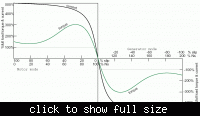gauthamtechie
Member level 1
WHY SYnchronouS motor's Field is stationary??
I Read that in synchronous motors "Rotor magnetic field is stationary with respect to the rotor " and in Induction motor "Rotor magnetic field rotates with respect to the rotor"
If that is true how does a synchronous motor rotate? And why does it stop if it isn't running at synchronous Speed whereas an Induction Motor(IM) Must Never touch the synchronous speed?
I Read that in synchronous motors "Rotor magnetic field is stationary with respect to the rotor " and in Induction motor "Rotor magnetic field rotates with respect to the rotor"
If that is true how does a synchronous motor rotate? And why does it stop if it isn't running at synchronous Speed whereas an Induction Motor(IM) Must Never touch the synchronous speed?
